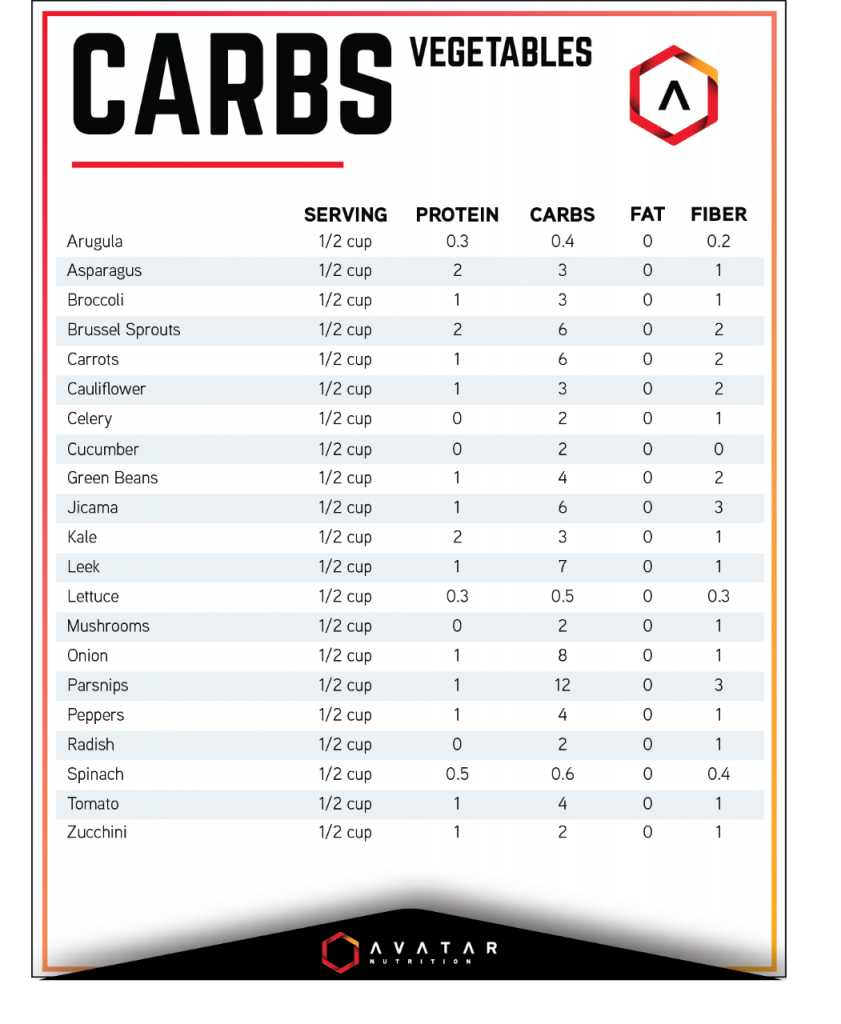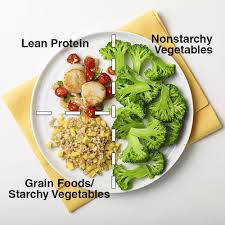In the United States, almost half of the population between the ages of 40-49 are obese or overweight per the CDC. Much of the reason for obesity in America is due to portion sizes going up and those portion sizes being loaded in fats and sugars. One thing we are adamant about with patients looking to lower blood sugar and weight is to monitor portion sizes. The most used method is the plate method where each section of the plate is comprised of one of three things.

The largest portion of the plate is half of the plate which should consist of non-starchy vegetables.
Non-starchy vegetables:
- broccoli
- greens
- cauliflower
- green beans
- beets
- carrots
- cabbage
- eggplant
- mushrooms
- okra
- onion
The other half of the plate is broken into 2 quarters. One of those quarters should be a lean protein such as fish, turkey, or chicken. The other quarter of the plate should be your starchy vegetable or grain. One thing we ask is to be careful not to mix starches and carbohydrates during a meal. As an example, not having rice with a starchy pea like black-eyed peas. You should choose one or the other, but what is a healthy portion size when it comes to starches and carbs?

As you can see, half a cup of white potatoes contains 13 g of carbohydrates, which is within a healthy range and can keep you from going over 45 g of carbs per a meal. 35-45 g of carbs per meal is within the healthy amount you should have and will help to keep your blood sugar from getting out of range. Remember, you must add in the carb count for the other foods at your meal which will require portioning your sizes because even healthy foods contain carbs.

Why do we worry about our portion sizes and overweight/obesity issues?
Excess body fat has serious consequences for the body’s metabolism, including:
- Higher levels of triglycerides
- Higher levels of LDL (“bad”) cholesterol
- Lower levels of HDL (“good”) cholesterol
- Decreased tissue responsiveness to insulin and higher insulin levels
- Higher blood sugar levels
Ugly numbers are more worrisome than an unflattering profile, for they explain the dramatic increase in illnesses in the United States that cause an enormous burden of death and disability, including:
- Coronary artery disease and heart attacks
- High blood pressure and strokes
- Diabetes mellitus
- Many forms of cancer (see “Obesity and cancer,” below)
- Fatty liver, which may progress to cirrhosis
- Osteoarthritis
- Depression and social isolation
Source: Harvard Health Publishing
